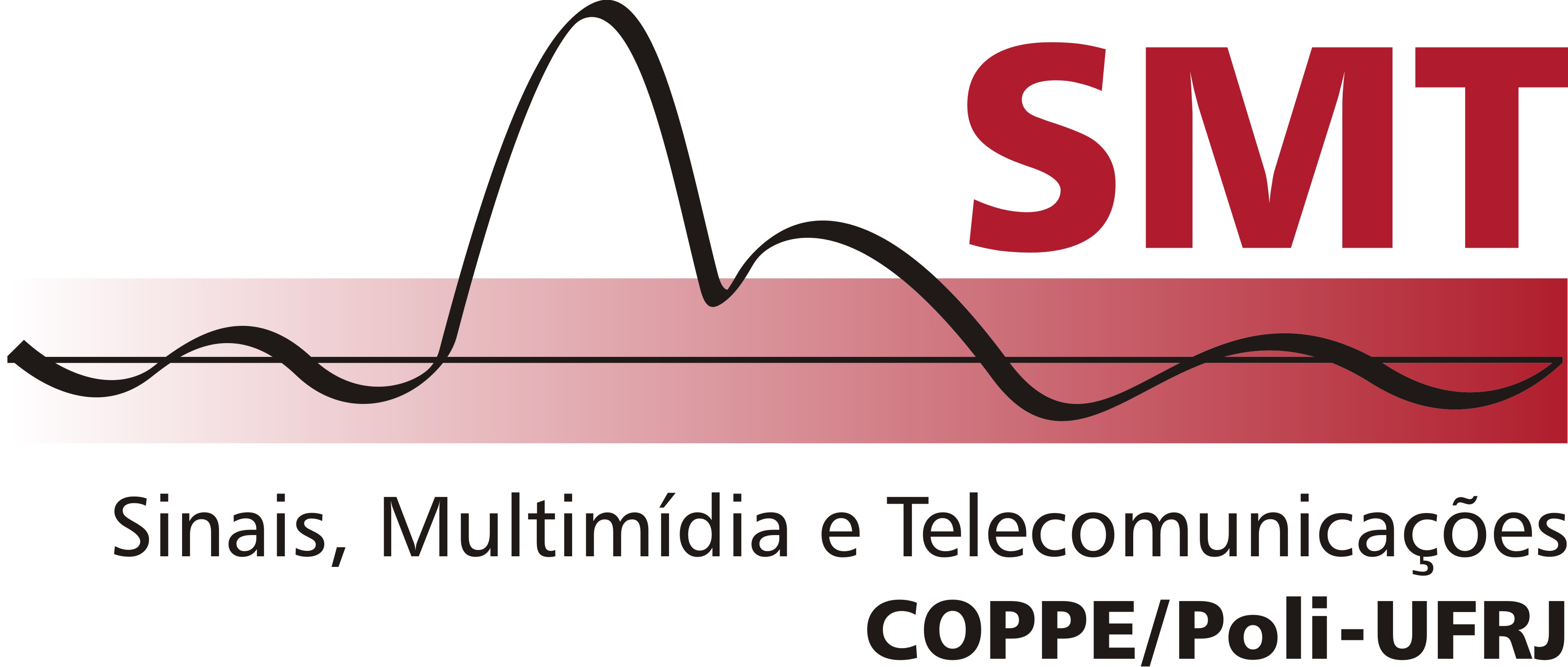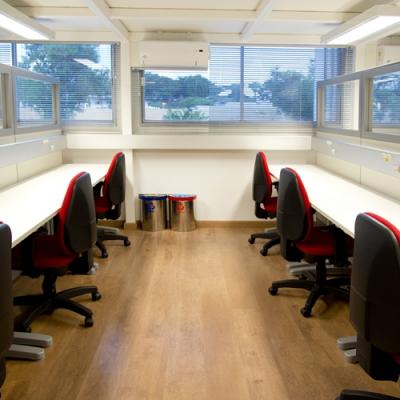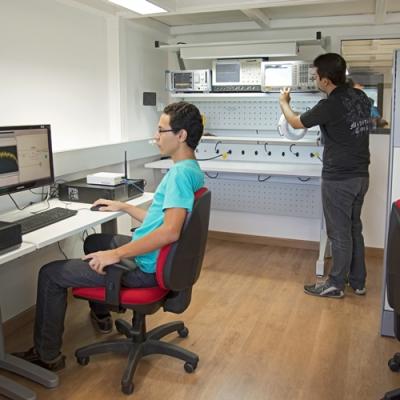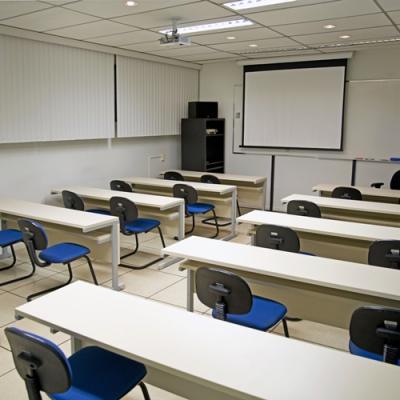Prof. Gianluca Setti - Fellow do IEEE
Data: 01/06/2015
Horário: 14 horas
Local: Centro de Tecnologia, Bloco H - Sala 322
Prof. Eduardo A. B. da Silva e o Lisandro Lovisolo (Presidente do Capitulo da Sociedade de Circuitos e Sistemas do IEEE no Rio) convidam a comunidade acadêmica para a palestra Compressive Sensing: From Algorithms to Circuits a ser proferida pelo Prof. Gianluca Setti - Fellow do IEEE.
Bio:
Gianluca Setti received a Dr. Eng. degree (with honors) in Electronic Engineering and a Ph.D. degree in Electronic Engineering and Computer Science from the University of Bologna, Bologna in 1992 and in 1997, respectively, for his contribution to the study of neural networks and chaotic systems. From May 1994 to July 1995 he was with the Laboratory of Nonlinear Systems (LANOS) of the Swiss Federal Institute of Technology in Lausanne (EPFL) as visiting researcher. Since 1997 he has been with the School of Engineering at the University of Ferrara, Italy, where he is currently a Professor of Circuit Theory and Analog Electronics. He held several position as Visiting Professor/Scientist at EPFL (2002, 2005), UCSD (2004), IBM T. J. Watson Laboratories (2004, 2007) and at the University of Washington in Seattle (2008, 2010) and is also a permanent faculty member of ARCES, University of Bologna. His research interests include nonlinear circuits, recurrent neural networks, implementation and application of chaotic circuits and systems, statistical signal processing, electromagnetic compatibility, and compressive sensing. Dr. Setti received the 2013 IEEE CAS Society Meritorious Service Award and co-recipient of the 2004 IEEE CAS Society Darlington Award, of the 2013 IEEE CAS Society Guillemin-Cauer Award, as well as of the best paper award at ECCTD2005, and the best student paper award EMCZurich2005 and at ISCAS2011. He held several editorial positions including the Editor-in-Chief for the IEEE Transactions on Circuits and Systems - Part II (2006-2007) and of the IEEE Transactions on Circuits and Systems - Part I (2008-2009). He also served in the editorial Board of IEEE Access (2013-2015) and, since 2015 of the Proceedings of the IEEE. He was the 2010 CAS Society President and in 2013-2014 he was the first non North-American Vice President of the IEEE for Publication Services and Products.Dr. Setti was among others the Technical Program Co-Chair of ISCAS2007 (New Orleans), ISCAS2008 (Seattle), ICECS2012 (Seville), BioCAS2013 (Rotterdam) as well as the General Co-Chair of NOLTA 2006 (Bologna). He is a Fellow of the IEEE.
About the lecture:
Conventional approaches to sample and capture signals or images are based on the celebrated Shannon theorem stating that the sampling rate must be at least twice the highest frequency in the band of the signal (the so-called Nyquist frequency). This principle is the basis of almost all methods of acquisition used in many consumer devices: signals are sampled at the Nyquist frequency or at higher rate. Compressed sensing (CS) is a new paradigm for the acquisition/sampling of signals that violates the intuition behind the theorem of Shannon. In fact, CS theory states that, under surprisingly broad conditions it is possible to reconstruct certain signals or images using far fewer samples or measurements than they are used with traditional methods. To enable this, compressive sensing is based on two concept/principles: sparsity, which is related to the signals of interest, and incoherence, which relates to the methods of measurement/acquisition/sampling. A sparse signal is such that the information rate of a signal can be much less than what is suggested by his band, or, for a discrete-time signal, that the number of its degrees of freedom may be much smaller than its time-length. Since the information content of the signal is small, it can be acquired using “incoherent” sampling functions which results to be random PAM signal with i.i.d. symbols. On the reconstruction side, it can be proved that, under very general conditions, the original signal can be retrieved by greedy methods and convex optimization. In other words the most significant feature of these sampling procedures is that they allow a sensor to capture the information content of a signal without going through the acquisition of its entire time-profile. Most notably all biosignals are in fact sparse, which makes CS particularly appealing for the acquisition of these signals in ultra-low cost wireless body sensor networks for wearable biomedical monitors. Aim of this talk is initially to introduce the above concepts using an intuitive approach. We will then assume that the signals to acquire are not only sparse, but also localized, e.g. as they always happens in practice, they preferentially occupy a given subspace (for instance they are all low-pass or high-pass in the frequency domain). We show how, for localized signals, the acquisition sequences need to be designed to maximize their “rakeness”, that is, to maximize their capability to collect the energy of the samples during the acquisition phase and thus the average SNR used in signal reconstruction. Such a maximization, however, cannot be unconstrained, since the property of incoherence need to be satisfied too and we will show how a simple design procedure can be devised to achieve this result. We will also show how Gaussian acquisition sequences obtained with the above procedure can be used to obtain an improvement of the average SNR of the reconstructed signals of at least 4-5dBs with respect to the classical use of i.i.d. sequences. We will then concentrate on the implementation of a prototype of an A/D converter based on compressive sensing (called Analog-to-Information or A2I converters) and examine pros and cons of the two most interesting architectures proposed so far, namely the Random Modulation Pre Integration (RMPI) and the Random Sampling (RS). We will show that while the RS architecture offers a more straightforward implementation with respect to an RMPI, it can achieve satisfactory performances in terms of probability of correct signal reconstruction when the signal to acquire is sparse with respect to the Fourier basis. On the contrary, the RMPI architecture can be employed for acquiring any kind of sparse signals and offers therefore the most promising solution for implementing an A2I. Next we will deal with the circuit/system design and implementation of a switched capacitor RMPI A2I in a 0.18um CMOS technology. We will show that the direct circuit implementation of the developed theoretical CS algorithms will lead to a highly suboptimal solution, and one need therefore to follow a design relying on an actual algorithm-circuit-system co-design. More specifically, we will show that:
-
One can replace Gaussian random acquisition sequences with binary antipodal ones, without altering the system performance in terms of reduction of the sampling frequency with respect to the Nyquist one. This allows to eliminate the needs of an analog multiplier which can be replaced by a simple couple of MOS transistors;
-
One can generate the binary antipodal random sequences with the desired covariance matrix by using a simple feedback circuit involving a comparator and a suitably designed FIR filter connected in a feedback loop;
-
When one take into account the saturation effect of the integrators needed, optimal performance can be achieved by a codesign of the actual circuits and of the corresponding decoding algorithms;
-
The result of measurements confirm the theoretical predictions.
















